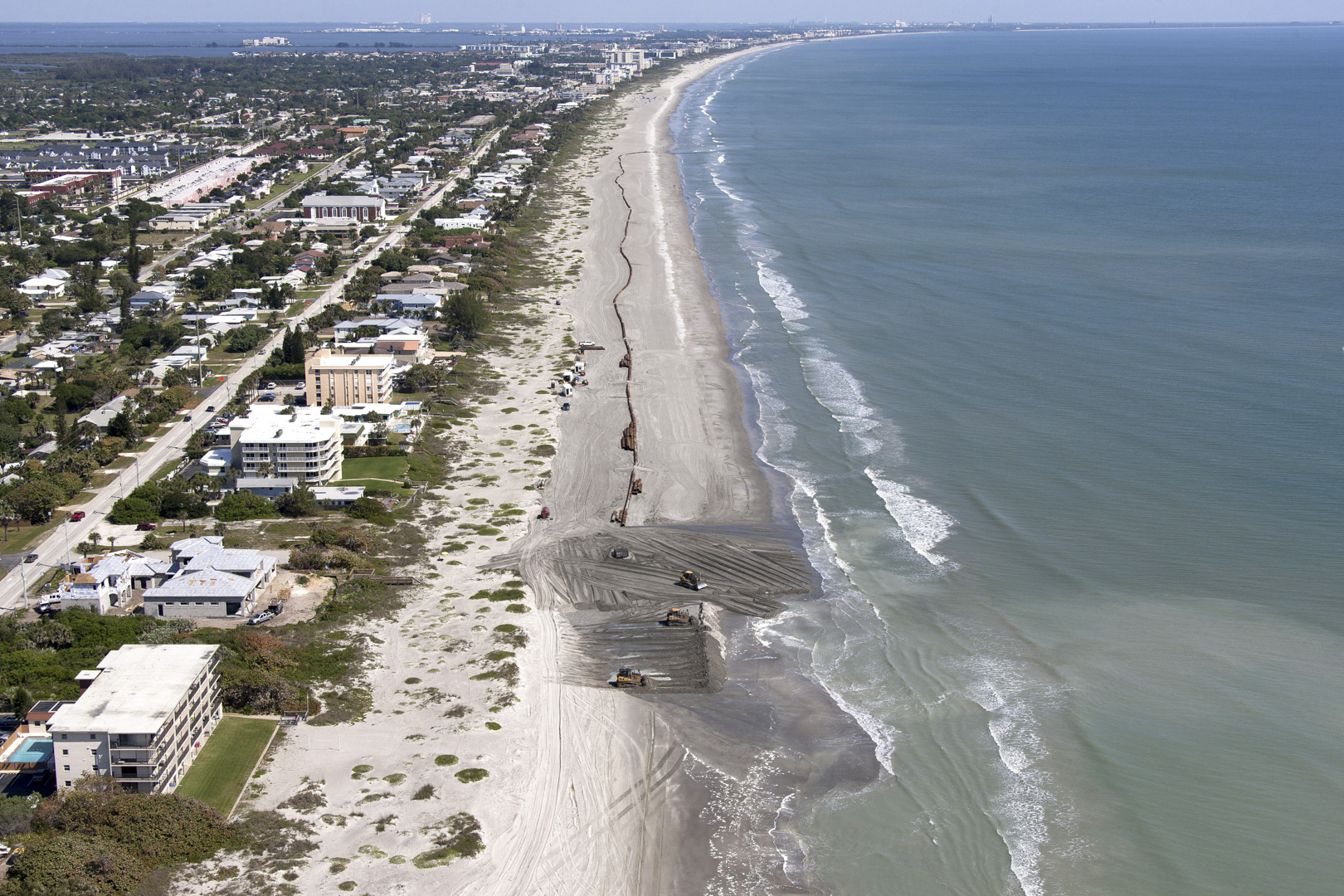Rebuilding beaches after hurricanes is costing U.S. taxpayers billions of dollars more than expected as the Army Corps of Engineers pumps mountains of sand onto storm-obliterated shorelines.
Congress approved more than $770 million since 2018 for emergency beach “nourishment” projects after five megastorms struck Florida, Georgia and the Carolinas. Those costs shattered government expectations about the price of preventing beaches from disappearing through decades-old programs that in many cases were created before the dangerous effects of climate change were fully understood.
Four of those storms — Michael, Maria, Irma and Ian — were among the most powerful to make landfall in the United States, raising questions about the rising costs of pumping, dumping and spreading sand onto beaches that are increasingly jeopardized by the effects of climbing temperatures.
The emergency funding since 2018 was used largely to fortify Florida beaches. Those costs far surpassed the annual price of scheduled beach repairs nationwide, which amounts to roughly $150 million over 19 states.
It also received less oversight than long-term rebuilding programs, which depend on rigorous analyses by the Army Corps to help ensure that financial benefits derived from activities such as tourism outweigh the price of piling sand on beaches that will eventually wash out to sea, according to researchers.
“It’s like the old-school way of the corps funding for nourishment has disappeared over the last decade,” said Andrew Coburn, associate director of the Program for the Study of Developed Shorelines at Western Carolina University.
“With Congress doling out all this money after disaster events, it seems the corps is being given carte blanche authority to do what they want on these beaches,” he added…
The beach aid came on top of billions of dollars in federal supplemental disaster relief for communities hit by those five storms, for things like infrastructure rebuilding and temporary housing. Unlike long-term beach projects — for which costs are shared between federal, state and local governments — emergency rebuilding is fully funded by the Army Corps.
They are considered “repairs” to long-running beach programs, known in Army corps parlance as coastal storm risk management projects, many of which date to the 1970s. They are one of the most controversial programs within the corps’ Civil Works Division because critics say it robs federal dollars from taxpayers in inland states to rebuild oceanfront communities — only to see the sand wash away.
Corps officials say such criticisms are unfounded and that beach rebuilding after disasters keeps coastal economies alive, in part by ensuring that vacationers can spend hundreds of millions of dollars annually on hotels, restaurants and retail shops…
Beach tourism in the U.S. accounts for roughly $45 billion in economic activity and generates about $25 billion in federal tax revenue, according to the American Shore and Beach Preservation Association, which works closely with the corps…
The federal government entered the beach-building business in the 1950s when work began on the first 18 shore protection projects, according to a corps history of coastal programs. Then in 1962, Congress gave the corps explicit authority to rebuild beaches, setting off what has become hundreds of projects, mostly on the Atlantic and Gulf coasts..
Studies show that the corps currently spends between $100 million and $150 million annually on those long-term projects, usually on a cost share of 65 percent federal and 35 percent state and local. But as hurricanes and other coastal storms grow more intense because of climate change, those costs could soar into the hundreds of billions of dollars by the end of the century.
“It’s simply astronomical what these dollar figures could add up to,” said Randall Parkinson, a coastal geologist and research associate professor at Florida International University in Miami.
He published a peer-reviewed paper with a colleague in 2018 under the unambiguous title: “Beach nourishment is not a sustainable strategy to mitigate climate change.”
Their findings, based on analysis of projects in the Florida Panhandle, ran counter to previous studies that suggested coastal communities could outrun rising ocean waters by pumping sand onto eroding beaches every five to seven years.
“That’s just not going to happen. We’re past the point of even thinking that piling sand onto beaches is going to save these communities,” Parkinson said in an interview.
A landmark federal study led by the U.S. Geological Survey in 2021 came to a similar conclusion, noting that the long-term viability of rebuilt beaches depend on the rate at which sediment is dispersed along shorelines…

